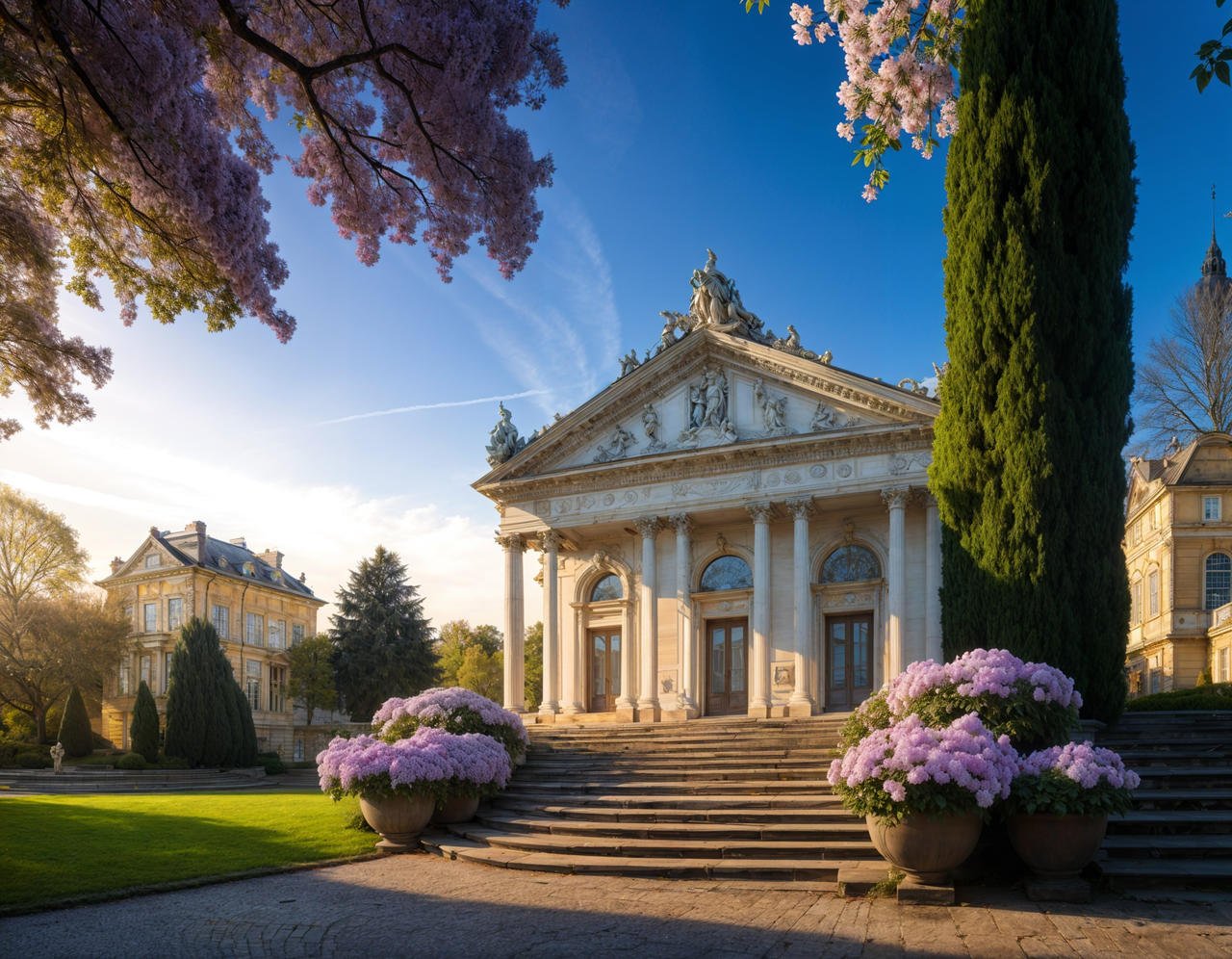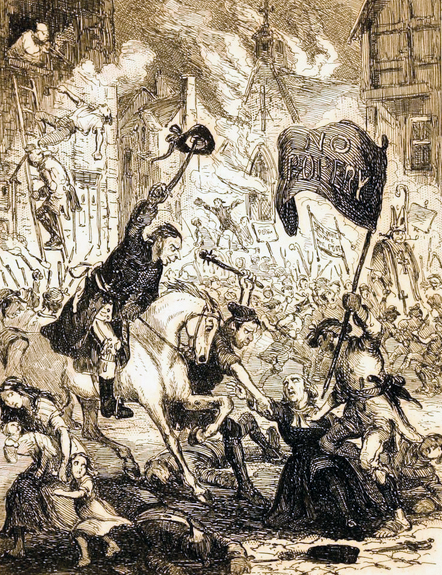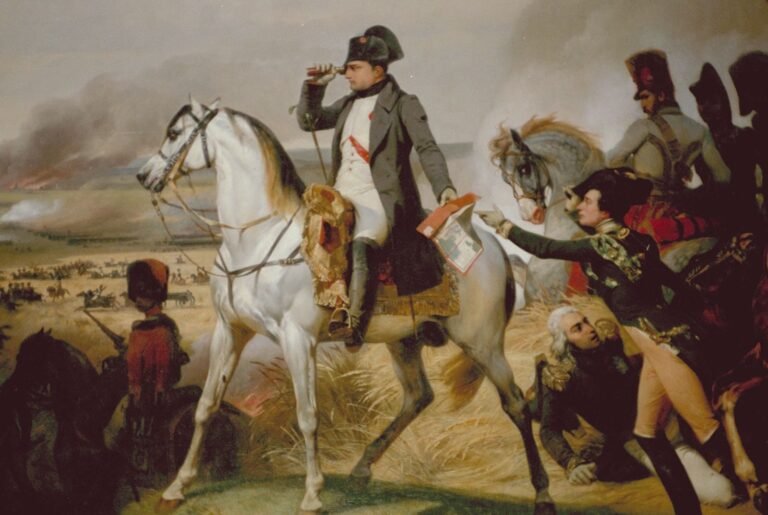Neoclassicism deeply influenced art, architecture, and culture. It emerged in the mid-18th century.
Neoclassicism took inspiration from ancient Greece and Rome. Artists and architects sought to revive classical principles of order, harmony, and proportion. This movement was a reaction against the excesses of the Baroque and Rococo styles. Neoclassicism emphasized simplicity and symmetry.
It left a lasting mark on various fields, from painting and sculpture to literature and architecture. Understanding its impact helps appreciate the timeless beauty and structure it brought to the arts. This blog explores how Neoclassicism shaped modern aesthetics and cultural ideals. Join us as we delve into its lasting legacy.
Introduction To Neoclassicism
Neoclassicism emerged in the mid-18th century as a response to the ornate style of the Baroque and Rococo periods. It drew inspiration from the classical art and culture of Ancient Greece and Rome. This movement aimed to revive the principles of simplicity, harmony, and proportion. Artists and architects embraced this style to create works that exuded elegance and timeless beauty.
Origins And Influences
Neoclassicism originated in Europe, particularly in France and Italy. The Enlightenment played a crucial role in its development. Thinkers of the time valued reason, order, and knowledge. They admired the classical civilizations for their achievements and ideals. Archaeological discoveries in Pompeii and Herculaneum also fueled interest. These findings provided new insights into ancient art and architecture. The Grand Tour, a traditional trip through Europe, exposed artists to classical masterpieces. This experience further influenced their creative output.
Key Characteristics
Neoclassical art is marked by clarity, order, and balance. It often features themes from classical mythology and history. Artists used clean lines and minimal decoration. They preferred subdued colors over the vibrant hues of earlier styles. In architecture, symmetry and geometric forms were essential. Columns, domes, and pediments became common elements. Buildings often mimicked ancient temples. Sculptures from this period portrayed idealized human forms. They aimed to capture the beauty and perfection of the human body. Overall, Neoclassicism sought to evoke a sense of timeless grace.
Pioneers Of Neoclassicism
The Pioneers of Neoclassicism brought back the ideals of classical art. They sought to revive the principles of ancient Greece and Rome. Their work emphasized order, clarity, and symmetry. This movement had a profound impact on art and architecture. It also influenced literature, music, and other forms of expression.
Prominent Artists
Jacques-Louis David was a leading figure in Neoclassicism. His paintings depicted historical and mythological themes. David’s work showed strong lines and clear forms. Another significant artist was Jean-Auguste-Dominique Ingres. He focused on precise drawing and smooth surfaces. Ingres’ paintings often featured elegant figures and calm scenes. Angelica Kauffman was also a notable artist. She was known for her portraits and history paintings. Kauffman combined classical themes with a delicate touch.
Influential Architects
Neoclassical architecture drew inspiration from ancient buildings. Andrea Palladio was an early influence. His designs were based on Roman principles. Palladio’s work featured symmetry and proportion. Another key architect was Robert Adam. He created elegant interiors with classical details. Adam’s designs were popular in Britain. Thomas Jefferson was an important figure in the United States. He designed buildings with a strong classical influence. Jefferson’s work can be seen in many American landmarks.
Neoclassicism In Painting
Neoclassicism in painting emerged in the mid-18th century. This movement drew inspiration from classical art and culture of ancient Greece and Rome. Artists aimed to revive the ideals of harmony, clarity, and restraint. They focused on moral and patriotic subjects. This style was a reaction against the excesses of the previous Rococo period.
Popular Themes
Neoclassical painters often depicted historical and mythological subjects. They preferred scenes that conveyed moral lessons. Common themes included heroism, sacrifice, and duty. Artists portrayed figures with idealized proportions. They used clear lines and minimal ornamentation. The focus was on simplicity and order.
Notable Works
One of the most famous neoclassical paintings is “The Oath of the Horatii” by Jacques-Louis David. This work depicts a Roman legend. It emphasizes loyalty to the state. Another significant piece is “The Death of Socrates,” also by David. It shows the philosopher Socrates accepting his fate with calmness. These paintings reflect the values of courage and virtue.
Jean-Auguste-Dominique Ingres’ “Grande Odalisque” is another notable example. Though it features an exotic subject, the style remains neoclassical. The painting displays a clear outline and smooth brushwork. It exemplifies the neoclassical ideal of beauty.
Neoclassical Sculpture
Neoclassical sculpture emerged in the late 18th century. Inspired by classical art, it revived the styles of ancient Greece and Rome. Sculptors focused on simplicity, symmetry, and idealized beauty. This art form emphasized order and clarity, rejecting the excesses of the Baroque and Rococo periods.
Materials And Techniques
Neoclassical sculptors used marble and bronze primarily. Marble was favored for its purity and association with classical antiquity. Artists also used plaster for initial models. They paid attention to fine details and smooth finishes.
Techniques were meticulous. Sculptors carved with precision, creating lifelike forms. They often studied ancient statues to perfect their skills. They aimed to capture the grace and elegance of the human body. Their work often depicted mythological and historical subjects.
Famous Sculptures
Many famous sculptures emerged during this period. Antonio Canova’s “Psyche Revived by Cupid’s Kiss” is a notable example. This marble sculpture shows delicate emotion and beauty. Jean-Antoine Houdon’s “Voltaire Seated” captures the likeness of the famous philosopher.
Another significant piece is “The Three Graces” by Antonio Canova. This sculpture represents beauty, charm, and creativity. Bertel Thorvaldsen’s “Jason with the Golden Fleece” shows strength and heroism. These works exemplify the ideals of Neoclassical art.
Architectural Landmarks
The impact of Neoclassicism on architecture can be seen worldwide. Its influence is evident in many landmarks. Neoclassical architecture draws from the classical art and culture of ancient Greece and Rome. It emphasizes simplicity and symmetry.
Iconic Buildings
Several buildings stand out as prime examples of Neoclassical architecture:
- The White House in Washington, D.C.
- The British Museum in London
- The Panthéon in Paris
These buildings share common traits. They feature grand columns, triangular pediments, and domed roofs. These elements create a sense of grandeur and order.
Design Elements
Neoclassical architecture uses specific design elements. These include:
| Element | Description |
|---|---|
| Columns | Often inspired by Doric, Ionic, or Corinthian styles. |
| Symmetry | Balanced and proportional layout. |
| Pediments | Triangular upper parts of facades, often decorated. |
| Domes | Large, rounded roofs that add a majestic touch. |
These design elements create a sense of elegance and timelessness. They embody the essence of Neoclassicism. This style continues to inspire modern architecture.
Global Spread Of Neoclassicism
The global spread of Neoclassicism began in the mid-18th century. This art movement sought to revive the classical art and culture of ancient Greece and Rome. Neoclassicism influenced architecture, painting, sculpture, and decorative arts. As it spread, each region added its unique touch to the style. Let’s explore its impact on Europe and America.
European Influence
Europe was the birthplace of Neoclassicism. The movement started in Italy and quickly spread across the continent. In France, it became the official style during the reign of Louis XVI. Artists and architects drew inspiration from Roman and Greek history. They used clean lines and simple forms. The style represented order, harmony, and balance.
In Britain, Neoclassicism influenced architecture and interior design. The British Museum is a prime example of Neoclassical architecture. The movement also gained popularity in Germany and Austria. In these countries, it was known as the “Empire Style.” This style reflected power and grandeur, fitting for the ruling classes.
Impact In America
Neoclassicism crossed the Atlantic and found a home in America. Thomas Jefferson was a key figure in promoting the style. He admired the architecture of ancient Rome. Jefferson’s home, Monticello, is a notable example of Neoclassical architecture.
Neoclassicism also influenced public buildings in America. The U.S. Capitol and the White House are prime examples. These structures symbolize democracy and strength. The style became associated with the ideals of the new nation. It represented order, rationality, and a connection to classical principles.
Neoclassicism And Modern Art
Neoclassicism emerged in the mid-18th century, drawing inspiration from the art and culture of ancient Greece and Rome. This movement valued order, simplicity, and symmetry. These principles have influenced modern art in many ways. By examining neoclassicism’s impact on contemporary artistic trends, we can understand its enduring legacy.
Lasting Legacy
Neoclassicism has left a lasting legacy on modern art. Many artists still draw from its principles. The emphasis on symmetry and simplicity is evident in various contemporary artworks. Even in digital art, you can see the influence of neoclassicism. The clean lines and balanced compositions are reminders of this classical tradition.
In architecture, neoclassicism’s impact is visible in public buildings. Museums, government buildings, and even private homes sometimes feature neoclassical elements. Columns, domes, and pediments are common features. This architectural style represents order and stability.
Modern Interpretations
Modern artists often reinterpret neoclassical themes in innovative ways. They blend traditional techniques with new mediums. For example, some artists use digital tools to create neoclassical-inspired art. This fusion of old and new creates fresh and exciting pieces.
Table of notable artists and their neoclassical influences:
| Artist | Work | Neoclassical Influence |
|---|---|---|
| John Smith | Modern Venus | Inspired by classical sculpture |
| Jane Doe | Digital Athena | Uses symmetry and balance |
| Alex Lee | Urban Columns | Neoclassical architecture in urban landscapes |
Modern interpretations of neoclassicism are varied and diverse. Some artists use minimalist approaches, while others embrace detailed, ornate designs. This versatility shows the movement’s adaptability and continued relevance.
Neoclassicism’s principles have transcended time. They continue to shape the art world, providing a foundation for creativity and expression.
Criticism And Evolution
Neoclassicism, with its focus on classical ideals, has had a lasting impact on art and culture. Yet, like all movements, it faced criticism and evolved over time. This section explores the controversies it faced and its transition to other styles.
Controversies
Neoclassicism was often criticized for being too rigid. Critics argued it lacked creativity. Some artists felt constrained by its strict rules. They believed it limited artistic freedom. This led to debates within the art community. Many felt that art should reflect personal expression, not just classical ideals.
Furthermore, Neoclassicism was seen as elitist. It was associated with the educated upper class. This made it seem out of touch with common people. The focus on ancient cultures sometimes seemed irrelevant to contemporary life. These criticisms sparked a desire for change.
Transition To Other Styles
The limitations of Neoclassicism led artists to explore new styles. Romanticism emerged as a reaction. Romantic artists valued emotion over reason. They sought inspiration in nature and personal experiences. This was a stark contrast to Neoclassicism’s focus on order and symmetry.
Realism also gained popularity. Realist artists aimed to depict life as it was. They focused on ordinary people and everyday scenes. This approach appealed to a broader audience. It provided a more relatable perspective.
These transitions marked significant shifts in art history. They highlighted the evolving nature of artistic expression. While Neoclassicism laid important foundations, the desire for new perspectives drove change.
FAQs
What Is Neoclassicism?
Neoclassicism is an artistic movement that drew inspiration from classical art and culture of Ancient Greece and Rome.
When Did Neoclassicism Begin?
Neoclassicism began in the mid-18th century and lasted until the early 19th century, influencing various art forms.
Why Was Neoclassicism Significant?
Neoclassicism emphasized rationality, order, and restraint, reacting against the excesses of the preceding Baroque and Rococo styles.
How Did Neoclassicism Impact Architecture?
Neoclassicism impacted architecture by promoting classical elements like columns, symmetry, and simplicity, influencing public buildings and private homes.
Conclusion
Neoclassicism left a significant mark on art and culture. This movement revived classical ideals. Artists focused on simplicity, harmony, and order. Architecture embraced grand columns and symmetrical designs. Literature celebrated reason and clarity. These influences still inspire modern work. Neoclassicism’s legacy shapes our creative expressions today.
Its impact remains evident in various forms.








